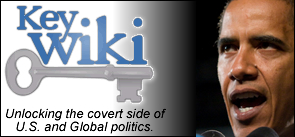Can You Handle the Truth About Vaccines?
By: Cliff Kincaid Accuracy in Media NBC accuses Republicans of accepting bad “science” on...
Read Moreby TMH | Feb 5, 2015 | Constitution, Politics, Survival | 0 |
By: Cliff Kincaid Accuracy in Media NBC accuses Republicans of accepting bad “science” on...
Read Moreby TMH | Feb 3, 2015 | American Revolution, American Stuff, Constitution, Financial, Founding Fathers, History, Illegal Immigration, Military, Politics, Religion, Survival, Taxation, Terrorism | 0 |
By: Michael Johns The largest and most impactful political movement, at least since the civil...
Read Moreby TMH | Jan 10, 2015 | Authors, Constitution, History, Politics, Survival, Trevor Loudon | 2 |
By: Trevor Loudon New Zeal Constitutionalists have to win the 2016 US Presidential elections or...
Read More

My beloved husband,
GARRY HAMILTON,
passed away
on September 24th, 2022.
I will love you always.

